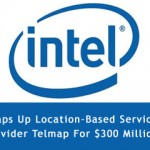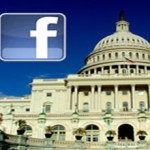
Redmond, Washington — Worlds prominent software maker Microsoft’s Bing, in an attempt to counter its rivals is seeking to increase the appeal of its Bing search engine with ever-more-specific services, has launched a new set of detailed airport maps that weary travelers are sure to appreciate.
Airports around the world are full of maze, but seamlessly finding your way around a new airport–at least major ones in the US–just got a bit painless with the help of Bing search. Searchers planning business or leisurely trips can now view detailed maps of 42 airports in the United States when searching on Bing, the company announced on its blog.
“The new airport maps delivers you everything you need to navigate your way through your travels,” reads the posting on the Bing Community blog. “Airport maps include information on parking garages, ticket counter information, terminals and gates, baggage claims, currency exchange and more.” That ‘more’ includes a directory of eateries and airlines.

The newly released Airport Maps consists of directions to and from, with a sortable directory of services and stores within the airport. Bing recently announced the addition of 42 detailed U.S. airport maps to its search options.
Airport stores and kiosks can now be sorted by business type, or the level on which they are located. Some of the essential landmarks included on the new airport maps show you the location of terminals, ticket counters, restrooms, eateries, ATMs, parking garages, baggage claim, currency exchange and more.
When searching for an airport, users have the option of searching under the Maps tab on Bing or clicking a link to the map in the standard search results. Via the desktop version of Bing, finding a map of one of the 42 airports currently covered (Microsoft plans on covering more), users can simply search for the airport name, code, or city on Bing and click on the map and then zooming in all the way into the building itself, or searching for their flight status on Bing and then clicking on the map icon visible alongside the airport listing.

In recent months, Bing has aggressively tried to differentiate itself from Google as with Action Buttons, while also emulating some of the search leader’s features, Bing has also begun deeply integrating Facebook features into search.
Thus, when users search for a specific person, for instance, Bing now presents Facebook information on the search-results page; and if they are traveling to a new city, such as Tokyo, Bing will inform you which Facebook friends of yours live there. The social media network’s increasingly ubiquitous “Like” button also makes an appearance in Bing results.
“Decisions do not get made on rationality alone,” Bing director Stefan Weitz stated in a May interview to eWEEK. “People ask other people for information. Eighty percent of the people making a purchase online will delay that decision until they inquire with someone else.
That Facebook connectivity, and a heavy focus on targeted services such as airport maps, are but a few of the ways that Microsoft hopes to keep Bing battling toe-to-toe with Google.
Moreover, with all of the additions that Bing has made, have somewhat helped it improve search market share. Besides, from the main airport map, visitors can also view current traffic speeds on a scale of slow to fast with four options, an aerial or bird’s eye view of the airport, or a view of the airport streetside (not available at all airports).
This is a much-needed improvement over the types of airport maps currently available and many will find it a far better substitute to stumbling around aimlessly in those concrete enclosures they trap us in a few hours before travel.
To view the full list of the mapped airports so far covered, you can check the Bing Maps Blog post below.


